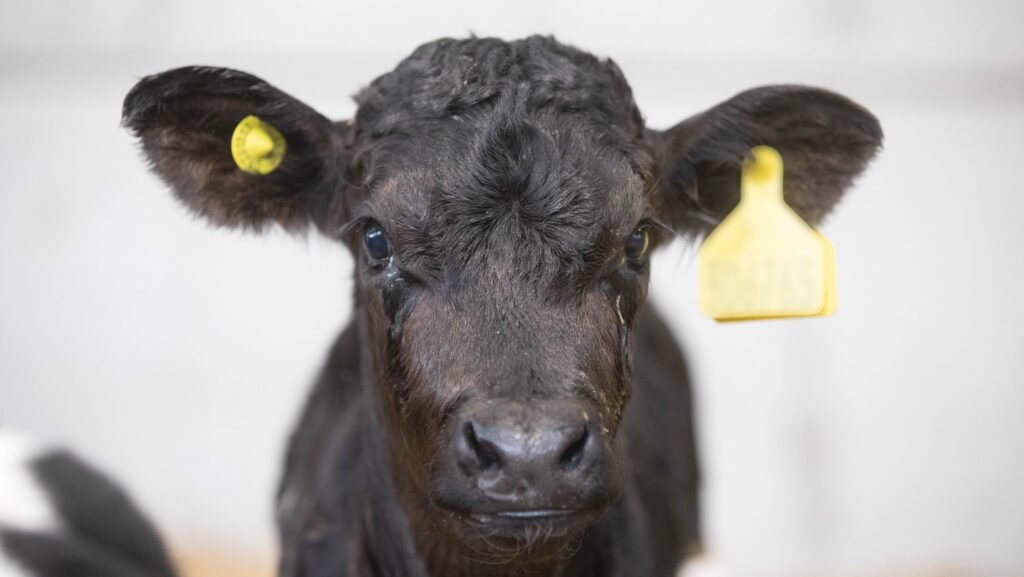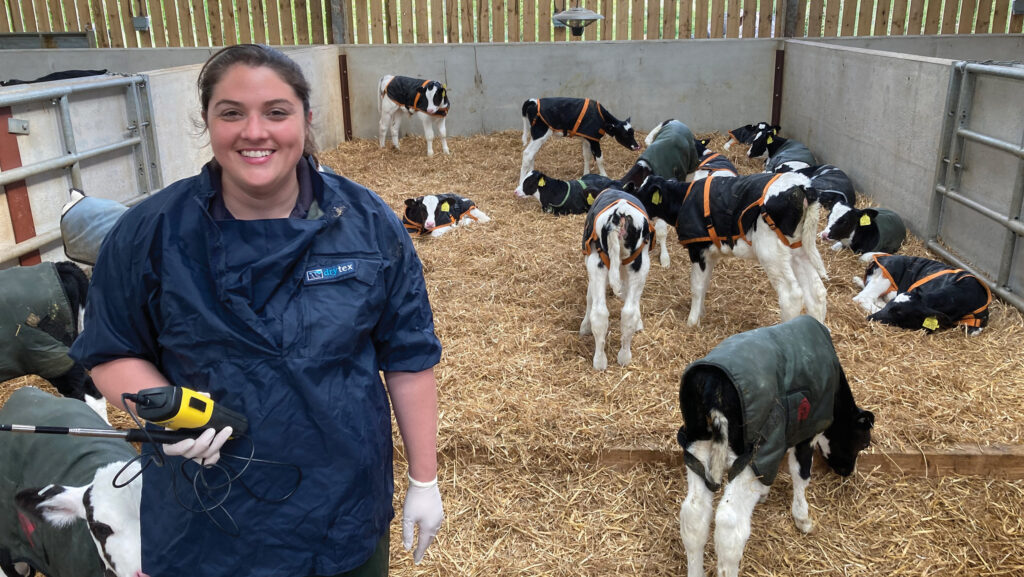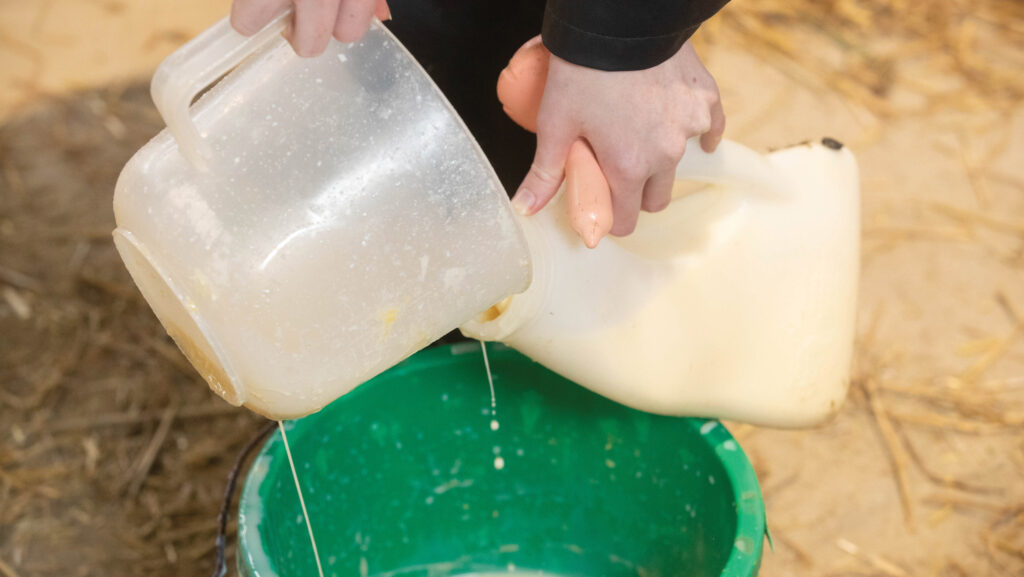Why it is important to calibrate a Brix refractometer
 © Tim Scrivener
© Tim Scrivener Cleaning and calibrating a Brix refractometer every time it is used will ensure that colostrum quality is measured accurately and consistently.
This will confirm whether the farm’s colostrum protocol is successful. But an accurate reading will also flag any transition management problems.
See also: How to manage colostrum and minimise calf losses
“We need to make sure we are getting that quality product if we have done all of that work,” says vet and youngstock specialist Kat Hart of The George Vet Group in Malmesbury, Wiltshire.
She points out that while colostrum with a reading of 22-23% (rather than the normal 25-26%) is still good for calves, it can nevertheless indicate an issue with cow health.
“It might be that dry matter intakes or forage proteins are not good enough, which [in turn] affect colostrum production by the cow during the dry period.”
A refractometer can also be used to check the consistency of reconstituted milk replacer powder, she adds.
If sampling the mix is done as calves are fed – at the top of a full bucket, and towards the end of an empty one – a reading of 12-15% is good, showing a consistent feed.

Kat Hart © The George Veterinary Group
Temperature sensitive
Kat is finding that more dairy farms have moved away from using a glass colostrometer to the more robust Brix refractometer for colostrum testing.
The floating colostrometer is more fragile and only accurate at a temperature of 20C, which means that the colostrum’s temperature needs to be measured with a thermometer at the same time.
“A Brix is more practical and reliable at different temperatures, so can be used to test colostrum straight from the cow or out of the fridge,” she explains.
Owing to the rising popularity of home-brewing, online prices have also tumbled in the past five years, making a refractometer an affordable £15-20 plus shipping.
“It works on light flow, not buoyancy, and measures sugars in a liquid such as beer or honey.
“The density principle [also] works on colostrum where the sugar content is linked to protein content – and antibodies are made from protein,” she says.
Best practice is to feed colostrum that is a minimum of 22%.
Kat points out it is important to buy a refractometer with a scale of 0-32% rather than the next model up, which has a scale of 32-50% and would show all colostrum as being too low in quality.
For those who want “super” accuracy to within 0.1% or find it hard to read the regular Brix scale, she says there is a digital version available for about £450-500.
This is also useful for consistent readings on larger farms where several people are calf rearing.
Test every collection
Colostrum should be tested at every collection, not just a couple of times a week. Accurate readings give more flexibility in how to feed or supplement colostrum of varying quality, says Kat.
This is why the refractometer should be calibrated before every test. Ideally, this is done using distilled water but she says that on a farm, tap water will suffice (see “AHDB instructions on using a Brix refractometer”).
Kat recommends getting the vet to test a colostrum sample – most practices now have a Brix –on a quarterly basis as well, to confirm accuracy.
As with any measuring, it is only worthwhile if the results are used.
Some farms use it to allocate their best colostrum (more than 25%) for heifer calves, while colostrum of 20-25% is given to beef calves, she says.
“Following the three Qs of colostrum harvest – quality, quantity, quickly – a calf that is 6-10 hours old [and is yet to suckle] needs to have higher quality colostrum because you have lost the quickness element.”
Similarly, Kat says there is growing evidence that after a stressful birth, a calf absorbs less protein.
In this case, a first feed needs to be of greater volume or a higher quality to compensate: “For a high-risk calf, give it 25% quality colostrum.”

© Tim Scrivener
Colostrum substitute
Brix results are helpful when using a phone app to calculate how much powdered colostrum substitute to add to a specific farm colostrum to boost antibody content.
“This is a good return on investment because quality products aren’t cheap and this is cheaper than having to use the whole packet,” she says.
The cost of a refractometer is minimal, she thinks, when compared with about £40 a calf for a top-quality colostrum supplement: “So that’s a good reason to test your own colostrum,” she says.
Feeding top-quality colostrum fresh is the best option.
However, herds may need to refrigerate if they have fewer daily calvings, while block-calving herds may need to carry over frozen colostrum for the start of next year’s block, she says.
Although guidelines state that colostrum with a reading below 22% should be discarded, Kat stresses that it is still a good follow-on feed.
“You should have enough good-quality colostrum on hand that you can discard the odd very poor one.
“But it still has growth factors with essential antibodies, vitamins and minerals, and white blood cells too.”
AHDB instructions on using a Brix refractometer
1. The refractometer should be calibrated before every use. Put 2-3 drops of distilled water on the glass surface.
2. Lower the cover over the sample so the water spreads across the entire surface, without air bubbles or dry spots.
3. Allow 15 seconds, then take a calibration reading. This allows the sample to adjust to room temperature.
4. Hold the refractometer up to natural light while looking down the eyepiece.
5. Looking down the eyepiece you will see a circular field with graduations down the centre. The scale should read zero where the light and dark areas meet. If not, adjust the calibration screw.
6. Wipe the surface clean with a clean, soft cloth.
7. Once dry, place a couple of drops of colostrum onto the glass surface and repeat the process.
8. Take a quality reading for the colostrum.
9. When happy with the reading, clean the slide and glass.
